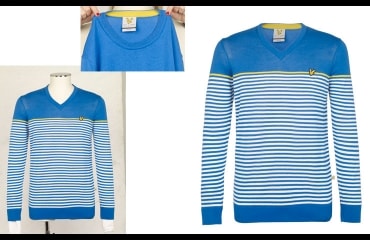
Understanding the need for manipulating high-resolution images
(hint: it adds value to social media visuals)
One of the main reasons why photo manipulation is increasing is because it is required constantly on various social media sites. Powerful tools now can make high-resolution images look fantastic. To increase the incentive for viewers to engage online, the HR visuals need to load quickly and we offer a few things to manipulate them. This understanding will prove useful for regular usage.
Web media challenges for HR visuals Making loading sites quicker with Photo Manipulation

Whether it is business websites or social media sites, we can actually see how visuals can impact the information that is relayed to the viewer. The right visuals can be manipulated in such a realistic way that they add value to the entire website. As the trend for eye-catching websites moves to visual loading, the need for photo manipulation, especially vector graphics are prominent. This rich media needs the services of expert image editors who are familiar with the latest manipulation techniques.
There is no doubt that viewers enjoy seeing eye-catching HR images but everyone does not have the same bandwidth and loading is frustrating. Hence, photo manipulation is done by editors. Photo Manipulation can be considered a set of complex things to do and few issues are addressed by the editor. For example, ghost mannequin, neck inserting to join back and front file together after removing the dummy/mannequin from a garment product. This term can be treated as image stitching or Neck join.
They may include the following even if the image seems perfect otherwise to the viewer
- Resizing to make the image lighter while loading. The HR clarity is not affected by this technique. Each device (desktop or mobile screen) supports a different resolution. Consumers are able to see the same images with clarity in all devices.
- Different image formats are acceptable on various devices. Hence, the files in which they are converted can be made better by editing. Such images are also used in video codes. An editor will have the knowledge to use Web Page, automatic fallback to JPEG or any other file format which the device does not support. When static HR images are used in video frames, the file size is important.
- At every stage, the editor will control the quality of an image as photo manipulation is done. He knows how much to compress, how many layers to add or subtract to offer a satisfactory visual content. This will make the user happy as less bandwidth is required for engagement.
- Deeper photo manipulation will involve 2-3 pictures. For example, take 3 images=one man dancing, an empty stage, and background of the cityscape. Each image is combined to make one consolidated image which shows the man dancing on a stage with a background behind.
Almost everyday new images are introduced and so are the image editing techniques. Understanding the way image photo manipulation is done will ensure that business websites that trade online can have interrupted browsing experience.
Social media users require images daily
Regular users will need to manipulate the visuals. Commercial activity or personal requirements have made it mandatory for people to resize images for better viewing. Today, it is best to opt for editors who can make the images appealing at affordable rates. This is why some offshore companies are able to provide photo manipulation services overnight to make high resolution images more acceptable.
Manipulation of Images to Boost Social Media Marketing
In the competitive landscape of social media marketing, the visual aspect plays a crucial role in capturing the audience’s attention. Photo Manipulation is done strategically and ethically, can significantly enhance the effectiveness of marketing campaigns. This involves adjusting, editing, and refining images to align with branding, message delivery, and consumer engagement. Here’s how photo manipulation can boost social media marketing:
1. Enhanced Visual Appeal
One of the primary objectives of photo manipulation is to make visuals more aesthetically pleasing. By adjusting colors, contrast, lighting, and sharpness, brands can create eye-catching images that stand out in a crowded feed. Attractive images are more likely to stop users from scrolling, increase engagement, and boost shares, likes, and comments.
- Example: A fashion brand might enhance the colors of their products, making them pop in images, ensuring they catch the eye of potential customers scrolling through Instagram or Pinterest.
2. Consistency in Branding
Brand consistency is key to building recognition and trust. Manipulated images allow brands to maintain a uniform look across their social media platforms. Whether it’s using specific color schemes, filters, or visual styles, consistent photo manipulation helps reinforce brand identity.
- Example: A tech company might apply the same color gradient and style to all its social media images, ensuring its brand is easily recognizable at a glance.
3. Storytelling and Emotion
Well-edited images can evoke emotions and tell stories more effectively than raw images. By altering certain elements of an image, marketers can craft visuals that better resonate with their target audience, triggering emotions that drive actions like following, sharing, or purchasing.
- Example: A travel company can manipulate landscape photos by enhancing the colors of the sky, water, or scenery, creating dreamy, wanderlust-inspiring images that motivate followers to book trips.
4. Highlighting Product Features
Photo manipulation is a powerful tool to focus attention on the key features of a product. Through techniques like cropping, zooming, and background blurring, marketers can make specific aspects of their products more prominent, ensuring that viewers quickly notice the selling points.
- Example: An electronics brand might zoom in on a product’s sleek design or enhance its lighting to make the product look more luxurious and desirable.
5. Creating Viral Content
Social media thrives on viral content, and cleverly manipulated images are more likely to be shared. Using humorous, surreal, or thought-provoking edits, marketers can create content that encourages engagement, potentially going viral and reaching a wider audience.
- Example: Memes and image mashups are often manipulated for comedic effect, making them shareable and likely to gain traction across various social platforms.
6. Incorporating User-Generated Content (UGC)
Manipulating user-generated content (UGC) can increase authenticity while maintaining a polished look. Marketers can tweak UGC slightly to fit the brand’s aesthetic without losing the organic feel, making it more attractive for sharing on official brand pages.
- Example: A skincare brand might repost a fan’s photo of their product and enhance the image’s brightness and contrast while keeping the original composition intact.
7. Creating a Professional and Polished Look
Professionalism is crucial for brand credibility. Proper manipulation ensures that the images are free from distractions, imperfections, and inconsistencies that could detract from the message. By refining images through techniques like retouching and object removal, brands can deliver a clean, polished look that reflects well on the business.



